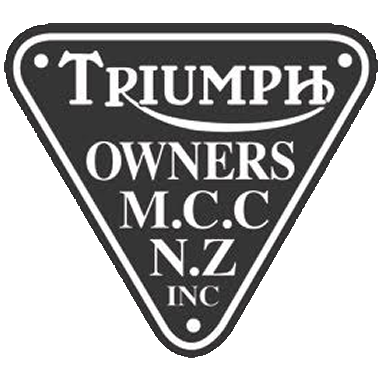Before I start I like to know as much as possible what is likely to need doing. This time on my 69 Bonnie the prime reason was oil leaks, I suspected the pushrod tube seals but it can be hard to tell where the oil is coming from. No smoke from the exhaust at all and she was running okay however to be sure I did a compression test. Fit the guage and kick over with throttle open so as the carb slide doesn’t mask and inlet valve problem. If the pressure is below 100psi I start to worry, some books say it should be 135 – 155psi depending on compression ratio and 20 psi below means work is required. Mine was only 60 psi on on cylinder, 70 psi on the other. Next squirt some engine oil into the plug hole and check pressure again. if the pressure comes up, mine increased to 120 psi, then ring and/or bore is the problem, if not the valves aren’t sealing. This is useful information as when I pulled the head off there was no ridge at the top of the cylinders, another sign of bore wear, but I knew the cylinder barrels had to come off for inspection. Before lifting the barrels, secure the tappets using one of several methods. I seem to do it differently every time, most manuals say wrap soft wire round to tie the two together, I have used rubber bands cut from a pushbike tube but this time the first thing I came across in the garage was an old bit of petrol pipe that I cut into short bits and pushed over the tappets, see photo.
Check the factory manual out! before removing and replacing barrels they recommend placing a gear lever rubber on each of the studs! like who has eight gear lever rubbers lying around their workshop?
“Oi back orf noddy, Nigel ‘ere, that were my idea an’ very innovative is were too. Me Uncle in stores (no relation to Uncle, TOMCC Waikato/BOP Coordinator………………..hang on it could be, Uncle’s getting on a bit now) ‘ad boxes of the bleedy things and he had told me as the right hand gear lever bikes were in the pipeline he had to shift them before ordering right hand rubbers. He’s a crafty bugger is Uncle and to help him out I came up with this method to protect pistons when removing barrels – and do I get any thanks for it – It’s bleedy hard to please some people.”
Gudgeon pins can be pressed out by heating the pistons or you can use your Shadbolt Extractor (see workshop hints, Crankcase Sludge Trap) or make up a removal tool as per diagram below. Before starting any of this work stuff a clean rag in the crankcase mouth, you don’t want to loose a circlip or the pin from your Shadbolt extractor down the crankcase.
I usually grind the valves in regardless when I have the head off, some say it’s unecessary but I feel better for having done it, and it’s easy these days using a battery drill (see grinding valves hint). Check the bore by placing a piston ring in the, unworn, bottom of the cylinder (make sure it’s square in the bore) and check gap then push the ring up the bore using the piston to near the top and check gap. If the difference in the two measurements is getting up around 24′ thou then you need to take them to the engine reconditioners to confirm whether a rebore is needed (you probably do if the difference is this much). My bore was quite badly scored which meant a trip the the reconditioners for a fairly savage hone, fortunately the piston/cylinder tolerances were quite tight meaning there was room to hone out the scratches. Replacing the cylinders I have never needed a ring compressor, I just sit the barrels on carefully on the pistons, which I sit on two strips of wood across the crankcase mouth, and use the taper at the bottom of the barrels the ease the rings in with my fingernails, alternating – top ring left cylinder, top ring right cylinder, second ring left cylinder etc.
To be continued…..





Pingback:Google
Pingback:Google